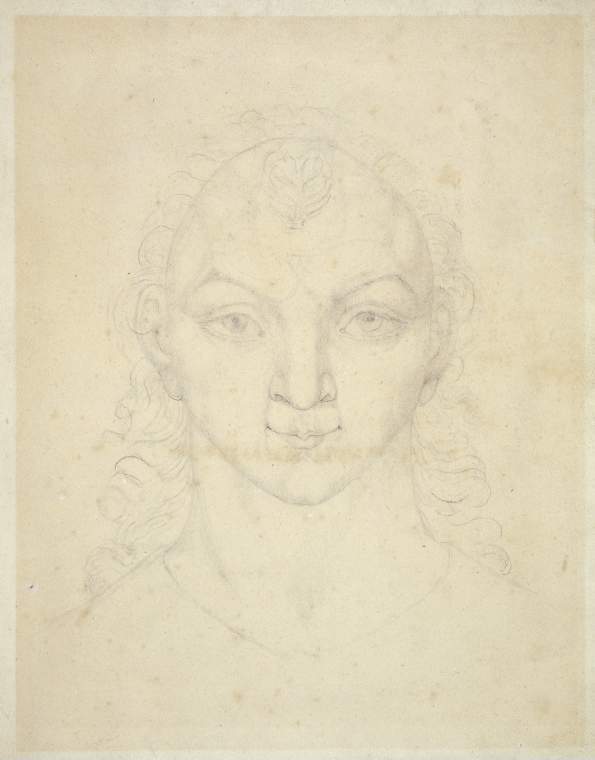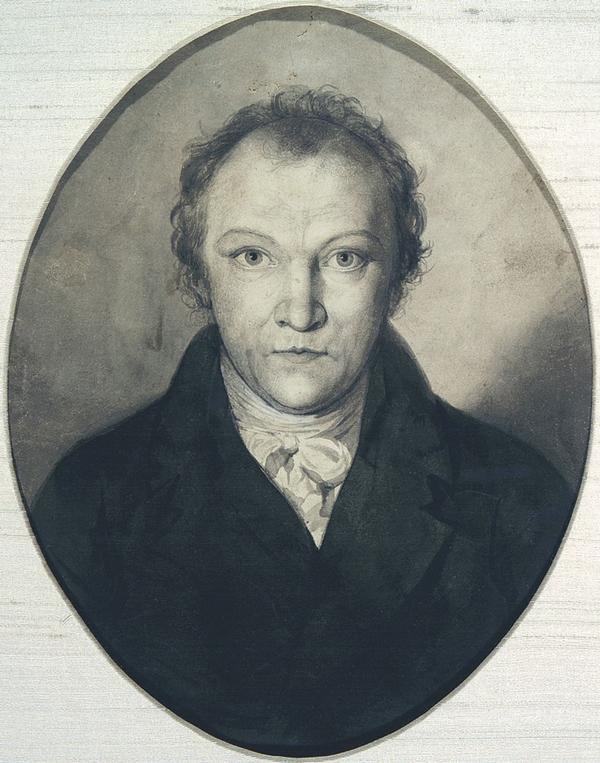"I soon encountered Blake's peculiarities, and was sometimes taken aback by the boldness of some of his assertions. I never saw anything the least like madness. I never opposed him spitefully, as many did. But being really anxious to fathom, if possible, the amount of truth that there might be in his most startling assertions, I generally met with a sufficiently rational explanation in the most really friendly and conciliatory tone. Even to John Varley, to whom I had introduced Blake, and who readily devoured all the marvellous in Blake's most extravagant utterances — even to Varley Blake would occasionally explain, unasked, how he believed that both Varley and I could see the same visions as he saw — making it evident to me that Blake claimed the possession of some powers, only in a greater degree, that all men possessed, and which they undervalued in themselves, and lost through love of sordid pursuits, pride, vanity, and the unrighteous Mammon."
 |
| Fitzwilliam Museum Visionary Head |
Linnell introduced Blake to his former teacher John Varley who seemed to have been fascinated by Blake's ability to receive visions. Varley who was a successful artist in his own right, had a strong interest in the supernatural. He practiced astrology and physiognomy and pursued any avenue into the occult which he could find. Blake was pleased to receive the attention of Varley and during 1819-21 spent many hours with Varley and Linnell seeking otherworldly experiences.
Blake developed a knack for picturing characters with whom he has no physical acquaintance for the entertainment of Varley. As a group these pictures became known as Blake's Visionary Heads. Blake may have been willing to attach the word 'visionary' to them because they incorporated vision to some extent, but objectively we can see that memory and reasoning played important roles in these portrayals. Varley placed greater credence in the visionary quality of Blake's productions created during these late night sessions than did Blake himself.
The head which bears the title The Portrait of a Man who instructed Mr Blake in Painting &c in his Dreams is informative. We see the face of a man which is both idealized and exaggerated. The impression it gives is of intense concentration or meditation. The enlarged asymmetric eyes are the center of attention. The shape of the head is stylized as an egg. The skull shows the form of the brain which resides within. In the center of the forehead is a figure which resembles the burning bush which alerted Moses to the presence of God. (Linnell made a copy which is in the Tate)
 |
| Wikimedia Commons Self-portrait 1802 |
Descriptive Catalogue, (E 541)
"Weaving the winding sheet of Edward's race by means of
sounds of spiritual music and its accompanying expressions of
articulate speech is a bold, and daring, and most masterly
conception, that the public have embraced and approved with
avidity. Poetry consists in these conceptions; and shall
Painting be confined to the sordid drudgery of facsimile
representations of merely mortal and perishing substances, and
not be as poetry and music are, elevated into its own proper
sphere of invention and visionary conception? No, it shall not
be so! Painting, as well as poetry and music, exists and exults
in immortal thoughts.
...
A Spirit and a Vision are not, as the
modern philosophy supposes, a cloudy vapour or a
nothing: they are organized and minutely articulated beyond all
that the mortal and perishing nature can produce. He who does
not imagine in stronger and better lineaments, and in stronger
and better light than his perishing mortal eye can see does not
imagine at all. The painter of this work asserts that all his
imaginations appear to him infinitely more perfect and more
minutely organized than any thing seen by his
mortal eye. Spirits are organized men:"
No comments:
Post a Comment